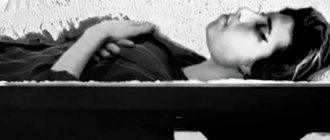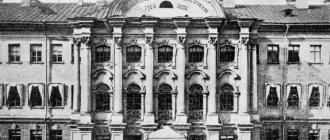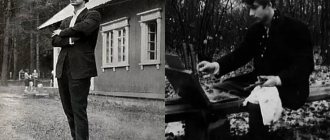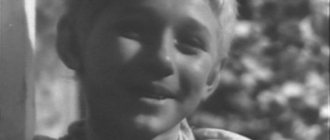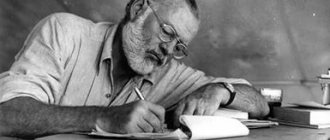Full name: Raisa Maksimovna Gorbacheva
Date of birth:
January 5, 1932
Zodiac sign:
Capricorn
Age:
67 years
Place of birth:
Rubtsovsk
Nationality:
Ukrainian
Date of death:
September 20, 1999
Activities:
Public figure, philosopher, sociologist
Education:
Moscow State University
Marital status:
Married
Spouse ):
Mikhail Sergeevich Gorbachev
Children:
Irina Mikhailovna Gorbacheva (Virganskaya) (b. 1957)
Childhood and youth, family
The future lady of the USSR Raisa Maksimovna Gorbacheva (nee Titarenko) was born on January 5, 1932 in Altai (Rubtsovsk) in the family of a railway engineer of Ukrainian origin - Maxim Andreevich Titarenko, Mother - Alexandra Petrovna Titarenko (nee Parada). In addition to Raya, the younger ones were growing up in the family: sister Lyuda and brother Zhenya. In 1949, Raisa Titarenko, having graduated from high school in the city of Sterlitamak with a gold medal, came to Moscow and in 1950, without exams, was admitted to Moscow State University at the Faculty of Philosophy. There, in the dormitory, she met her future husband, Mikhail, who also studied at the Faculty of Law.
Gorbacheva, Raisa Maksimovna
Pedigree
Father - Maxim Andreevich Titarenko (1907-1986) - railway engineer, came to Altai from the Chernigov province. The family often moved after their father, a railroad worker. His paternal grandfather, Andrei Filippovich Titarenko, moved from the village to Chernigov, was a non-party member, spent four years in prison, and worked as a railway worker. Paternal grandmother - Maria Maksimovna Titarenko. Andrei Filippovich and Maria Maksimovna had three children: two daughters and a son. Andrei Filippovich died during a walk and was buried in Krasnodar[5].
Mother - Alexandra Petrovna Titarenko (nee Parada; 1913-1991)[5] - a native Siberian, native of the village of Veseloyarsk, Rubtsovsky district, Altai Territory[6]. Maternal grandfather - Pyotr Stepanovich Parada (1890-1937) - was a wealthy peasant, had six children, four survived: son Alexander (worked as an economist, died at 26), son Ivan and daughter Alexandra. My grandfather was shot as a Trotskyist, as he opposed collectivization and the Stakhanov movement, and was posthumously rehabilitated in 1988. The maternal grandmother, Anastasia Vasilyevna Parada, was a peasant woman and died of hunger[5].
Parents of Raisa Maksimovna - Alexandra Petrovna Titarenko and Maxim Andreevich Titarenko, 1930s
Younger brother - Evgeny Maksimovich Titarenko (1935-2018) - writer; niece - Irina, graduate of the Higher Art School. Stroganov[5]. The younger sister, Lyudmila Maksimovna Ayukasova (born 1938), graduated from the Bashkir Medical Institute and worked as an ophthalmologist in Ufa; her husband Damir Kharisovich Ayukasov (1931-1999) is an engineer, Honored Inventor of the RSFSR[7][5].
Childhood and youth
Raisa Maksimovna Titarenko was born on January 5, 1932 in Rubtsovsk, West Siberian (now Altai) region.
Raisa spent her childhood in Siberia and the Urals. After graduating from high school in the city of Sterlitamak (1949) with a gold medal, she came to Moscow and was admitted to the Faculty of Philosophy at Moscow State University without exams (1950). There, in the dormitory, she met her future husband, Mikhail, who was studying at the Faculty of Law.
On September 25, 1953 she married Mikhail Gorbachev. The wedding took place in the dietary canteen of the student dormitory on Stromynka.
As Mikhail Gorbachev said in a press interview in September 2014, Raisa Maksimovna’s first pregnancy in 1954 back in Moscow due to heart complications after suffering from rheumatism, doctors, with his consent, were forced to terminate artificially; The student couple lost a boy, whom his father wanted to name Sergei[8].
Life in the Stavropol Territory
After graduating from the university, she entered graduate school, but following her husband, who was assigned to the Stavropol Prosecutor's Office, she moved to the Stavropol Territory in 1955. With the change in climate, Raisa felt better[8].
For the first 4 years, R. M. Gorbachev could not find a vacancy in her specialty, and the family lived on the wages of her husband, a Komsomol worker. The Gorbachev family lived in a small rented room in Stavropol, where their daughter Irina was born in 1957. That same year, the family moved to a communal apartment, where they occupied two large rooms.
Living in Stavropol, R. M. Gorbacheva was a lecturer at the Stavropol branch of the All-Russian Society “Knowledge”, taught at the philosophy department of the Stavropol Medical Institute, Stavropol Agricultural Institute, and prepared scientific qualifying work in the field of sociology[6].
In 1967, she defended her dissertation at the Moscow State Pedagogical Institute named after V.I. Lenin on the topic “Formation of new features of the life of the collective farm peasantry (based on sociological research in the Stavropol Territory)” and received the academic degree of Candidate of Philosophical Sciences[9].
First Person's Wife
Raisa Gorbacheva and Nancy Reagan, 1987 Reagans and Gorbachevs Raisa Gorbacheva at the All-Union Founding Conference of the Soviet Children's Fund named after V. I. Lenin.
On October 14, 1987, Raisa Gorbachev and Boris Yeltsin On December 6, 1978, the Gorbachevs moved to Moscow[10]. There, before Mikhail Gorbachev was elected secretary of the CPSU Central Committee, Raisa Maksimovna gave lectures at Moscow State University and continued to participate in the activities of the All-Russian Society “Knowledge”.
After 1985, when her husband was elected General Secretary of the CPSU Central Committee, Raisa Maksimovna became involved in social activities. Together with Academician D.S. Likhachev, G.V. Myasnikov and other figures of national culture, she created the Soviet Cultural Foundation and became a member of the Foundation’s presidium.
Largely thanks to R. M. Gorbacheva, the Foundation’s support was received by the Central Museum of Ancient Russian Culture and Art, the All-Russian Museum of Decorative, Applied and Folk Art, the Marina Tsvetaeva Museum, the Museum of Private Collections of the Pushkin State Museum of Fine Arts, the Benois Family Museum in Peterhof, and the Roerich Museum . He also contributed to the restoration of churches and civil architectural monuments, the return to the USSR of previously exported cultural property, libraries and archives.
In the period from 1986 to 1991, the Foundation raised and allocated funds equivalent to one hundred million US dollars for cultural activities[11].
As the wife of the General Secretary of the CPSU Central Committee, and later the President of the USSR, she accompanied Gorbachev on his trips, participated in receptions of foreign delegations who came to the Soviet Union, and regularly appeared on television, often causing the hostility of Soviet women, many of whom thought that she too often changes outfits and talks a lot. Before her, Valentina Tereshkova, as a rule, met with the wives of high-ranking officials who came to the USSR.
Mikhail Gorbachev noted that Raisa Maksimovna was fluent in English. Thanks to this, Gorbachev could easily communicate with Margaret Thatcher, other politicians and friends in the West, and her husband could only communicate through an interpreter[8].
“There are a lot of myths and speculations about some kind of extraordinary passion of mine for villas, dachas, luxurious clothes, jewelry,” Raisa Maksimovna was surprised. “I didn’t sew either from Zaitsev, as he hinted in his interviews, or from Yves Saint Laurent, as journalists claimed... I was dressed by female craftsmen from the atelier on Kuznetsky Most...”
Claims about the outfits were not the only ones that slipped through the press at that time. Former head of the General Department of the CPSU Central Committee and assistant to M. S. Gorbachev V. I. Boldin writes in his book “The Collapse of the Pedestal” about how the KGB was instructed to select a staff of servants for the first lady from silent, hard-working women, no younger or more attractive than the hostess .
Raisa Gorbacheva in Minneapolis, 1991
Abroad, Gorbacheva's personality aroused great interest and high praise. Thus, the British magazine “Woman’s Own” named her woman of the year (1987), the International Foundation “Together for Peace” awarded Gorbachev the “Women for Peace” award, and in 1991 - the “Lady of the Year” award. It was emphasized that the wife of the President of the USSR acted in the eyes of the public as a “messenger of peace,” and her active support for Gorbachev’s progressive plans was noted.
During Gorbachev’s presidency, she participated in the work of the board of the “Help for the Children of Chernobyl” Foundation, provided patronage for the International Charitable Association “Hematologists of the World for Children,” and patronized the Central Children’s Hospital in Moscow[12].
However, the hostility of her compatriots and compatriots to Gorbacheva’s way of life haunted her until the August putsch of the State Emergency Committee of 1991, when, during the days of the imprisonment of the USSR President in Foros, people for the first time saw in her a woman who supported her husband in difficult times [ source not specified 4102 days
]. As a result of these events, she suffered a mini-stroke and her vision deteriorated.
Personal life
In 1953, a modest wedding of third-year students of Moscow State University took place in the dietary canteen on Stromynka: law student Mikhail Gorbachev and philosophy student Raisa Titarenko.
In the photo of those years, Mikhail’s face lights up with a happy smile, and Raisa is a little sad: the wound in her soul from parting with her first fiancé, a physicist, who abandoned her, has not yet healed. Poor guy, but he could have become president...
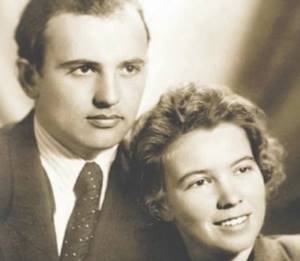
During the years of shortages, we managed to get white chiffon for a dress, a roommate borrowed shoes, but the newlyweds did not have money for rings. The first wedding night took place only two weeks later, when the students left for collective farm work. A year later, Raisa told her young husband the good news: she was pregnant. They decided that if a son was born, they would name him Seryozha, in honor of Gorbachev’s father. But Raisa, who had recently suffered from rheumatism, had an extremely difficult pregnancy. As a result, the doctors gave the young husband a choice: either a child or a wife. He chose his wife...
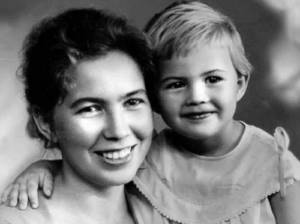
The long-awaited daughter Irina was born only in 1957. The family then lived in Stavropol and for the sake of this event they moved from a rented room to a communal apartment, where they occupied two whole rooms.
Having received her diploma, Raisa entered graduate school in Moscow, but Gorbachev was assigned to the Stavropol Territory, and she went with him. For four years she was a housewife and the wife of a prosecutor. Then she got a job as a philosophy teacher at an institute. With the help of his wise wife, Mikhail Gorbachev quickly made a career along the party line. But Raisa Maksimovna’s real goal was to return to Moscow. And she made a cunning plan.
Many members of the Politburo came for rest and treatment in the Stavropol sanatorium. Of course, lavish parties were thrown for them. Having made the necessary contacts, Raisa obtained invitations for herself and her husband to private banquets. She wrote down quotes from classics and wrote up scripts for conversations, which she then rehearsed with her husband. Her plan worked. In 1978, the Gorbachevs moved to Moscow, where Mikhail Sergeevich received the post of Secretary of the Central Committee, and soon a member of the Politburo. And Raisa Maksimovna began teaching at her native Moscow State University.
Notes[ | ]
- ↑ 1 2 3 4 Bibliothèque nationale de France
BNF identifier (French): open data platform - 2011. - ↑ 1234567
https://www.gorby.ru/en/gorbacheva/biography/ - Gorbachev Foundation. - ↑ 1234
Raissa Gorbatschowa // Munzinger Personen (German) - Gaddis JL
The Cold War: A New History (English) - 1 - USA: Penguin Books. - P. 229. - ISBN 978-0-14-303827-6 - ↑ 1 2 3 4 5 Mikalay Alyaksandravich Zyankovich, Nikolai Zenkovich.
The most secret relatives. - OLMA Media Group, 2005. - 516 p. — ISBN 9785948504087. - ↑ 12
Gorbachev, 1991. - The most secret relatives - Mikalai Alyaksandravich Zyankovich, Nikolai Zenkovich - Google Books
- ↑ 1 2 3 Anna VELIGZHANINA |
Komsomolskaya Pravda website. Frank confession of Mikhail Gorbachev: Raisa and I lost our son (Russian). KP.RU - website of Komsomolskaya Pravda (March 2, 2014). Access date: October 17, 2021. - Gorbacheva, Raisa Maksimovna. Formation of new features of the life of the collective farm peasantry: (Based on materials from sociological research in the Stavropol Territory): Abstract of thesis. for the academic degree of Candidate of Philosophical Sciences / Moscow. state ped. Institute named after V.I. Lenin. — Moscow: [b. i.], 1967. - 24 p.
- Gorbachev Foundation. Biography
- History of the Russian Cultural Foundation (unspecified)
. culture.ru; archive.org (May 13, 2007). — The inaccessible link has been replaced with an archived one. Access date: February 9, 2013. Archived May 13, 2007. - Exhibition “Raisa Maksimovna Gorbacheva” (unspecified)
. rol.ru; archive.org. — The inaccessible link has been replaced with an archived one. Access date: February 9, 2013. Archived April 28, 2005. - Dobrusin, 1996.
- Vansovich E.
Raisa Gorbacheva does not have cancer
(undefined)
.
Kommersant, 1999, No. 144 (1788)
. Kommersant (August 13, 1999). Access date: February 9, 2013. - Gridneva N.
Case history
(unspecified)
.
Kommersant, 1999, No. 171 (1815)
. Kommersant (September 21, 1999). Access date: February 9, 2013. - Oboymina, Tatkova, 2007.
- Case history Newspaper "Kommersant" No. 171 dated 09.21.1999, p. 6
- Raisa Gorbacheva died: Russia: Lenta.ru, 09/20/1999. Archived November 12, 2013 on the Wayback Machine
- Ex-KGB agent, United Russia deputy Alexander Lebedev transferred his shares worth $190 million to the Gorbachev Foundation (inaccessible link) (inaccessible link)
- (unspecified)
opened in St. Petersburg . gzt.ru; archive.org (September 20, 2007). — The inaccessible link has been replaced with an archived one. Access date: February 9, 2013. Archived May 1, 2009. - Gorbachev and Makarevich recorded a music album (Russian). Interfax (June 16, 2009). Access date: February 9, 2013.
- Telegraph: Raisa Gorbacheva sent recipes for potato dishes to the British minister
- Perestroika Mikhail Zvezdinsky - YouTube
- Gabriel Popov: I would still go to perestroika (undefined)
. BBC (bbc.co.uk) (9 March 2005). Access date: February 9, 2013. Archived February 11, 2013.
Career, politics
A whole world opened up before her - she and her husband went on business trips abroad, where they were received at the highest level.
In addition to important government affairs, Raisa Maksimovna also had small feminine weaknesses. So, in December 1984, he and Mikhail Sergeevich arrived in England. At the London Cartier salon, she liked diamond earrings worth a fortune - $5,000. One of the local diplomats kindly put his credit card at her disposal, with which Raisa Maksimovna was able to make a purchase. Intelligence immediately reported this blatant fact to Chernenko. Gorbachev’s head would not have been blown off, but the Secretary General, without having time to figure it out, died. And Mikhail Gorbachev took his place. Lucky.
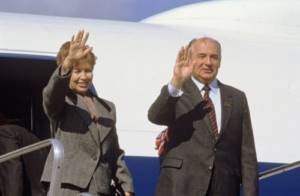
Having become the first lady of the country, Raisa Maksimovna carefully monitored not only the house, but also state policy: Mikhail Sergeevich did not make a single decision without consulting his wife. On trips abroad (together they visited more than 40 countries), the Gorbachevs were always accompanied by an airplane carrying a car with a personal driver. Some argued that this was Raisa Maksimovna’s whim, others saw her wisdom in this: in this way Gorbacheva advertised the domestic auto industry.
Possessing an excellent education and a broad outlook, Raisa Gorbacheva, unlike her husband, spoke fluently in English with top officials of countries without translators. She was friends with Margaret Thatcher, and she admitted in her memoirs that she was always envious of Madame Gorbachev’s costumes and delicate taste. Raisa Maksimovna was the initiator of the opening of the Burda Moden fashion house in Moscow. And even though the shelves of Soviet stores did not leave hope for fashionistas, millions of Soviet women could now sew outfits using patterns from the legendary magazine.
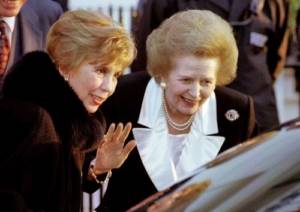
Raisa Maksimovna was not openly called a style icon, but she was one in the USSR - like Jacqueline Kennedy or Princess Diana. There were rumors that Mikhail Sergeevich was often late for meetings because his wife was spinning in front of the mirror and choosing outfits that the whole country was watching. “There are a lot of speculations about my passion for luxurious outfits...” Gorbachev said in an interview. — I didn’t sew from either Zaitsev or Yves Saint Laurent. I was dressed by craftsmen from the studio on Kuznetsky Most.”
Once at a reception, the Gorbachevs went out onto the dance floor and began to spin in a slow dance - the whole world seemed to have ceased to exist for them. The music ended long ago, the couples went their separate ways, but they kept dancing and dancing. “It seems that Mikhail Sergeevich sincerely loved his wife,” newspapers wrote many years later. In an interview, Gorbachev recalled: “We had no quarrels, only minor disagreements. But when Raya and I argued about something, she would say: “Keep quiet. You only have a silver medal!”
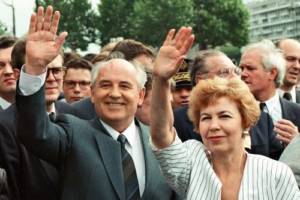
Disputes were disputes, but she always supported her husband in everything. She helped him with government affairs and, of course, provided the rear: comfort in the house, delicious dinners (though not without the help of a staff of servants) were on the shoulders of the first lady. There was almost no personal time left. And yet they managed to escape in the evening for a walk - just the two of them. There was one rule: talk about anything except work. We discussed books, news, music. They called it "interpenetration."
Illness and death of the last lady of the USSR
In August 1991, Raisa Maksimovna appeared before the country in the role of an ordinary confused woman, supporting her husband to the last.
But deep down I was glad of his resignation - there would be time to live for myself. And they retired to the dacha. They wrote books together and traveled a lot around the world. But the quiet family happiness did not last long: in 1999, Raisa Gorbacheva was diagnosed with leukemia. There was hope that money and connections would help her get better. But the best doctors in the world could not save her. Chemotherapy completely weakened the immune system and took away the possibility of a bone marrow transplant. Raisa Maksimovna seemed to be on the mend, but then fell into a coma and died on September 20, 1999, without regaining consciousness. She was only 67 years old. The cause of death was leukemia.
“It was perestroika that took my wife away from me: experiences shortened Raisa’s life...” Gorbachev said with tears in his eyes. A lot of gossip was spread around the spouses, black and unfair. And Raisa Maksimovna took everything to heart.
“I probably had to get such a serious illness and die for people to understand me,” Gorbacheva once said sadly. But she continues to live in history and do good deeds - the Institute of Pediatric Hematology and Transplantology, as well as the International Foundation to Fight Childhood Leukemia and Cancer, are named after her.
Shortly before her death, Raisa Maksimovna began writing a book about the most intimate thing - her private life with her husband. She didn’t want to make excuses, no, but to tell about her great love, to dot all the i’s. Gorbachev was against it: “Why? You will never prove anything..."
After the death of his wife, Mikhail Sergeevich kept all the drafts: “To this day, her handbag is intact, containing letters, sheets, notes. After she left, I began to sort through the notes. I came across a sheet, and on it was written diagonally in red ink: “What does your heart hurt about?” Ready title..."
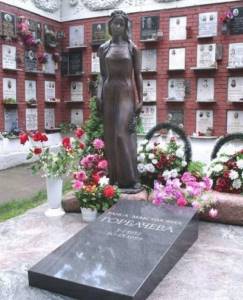
Last years of life[ | ]
R. M. Gorbachev, 1989
Social activities and charity[ | ]
After Gorbachev’s voluntary resignation from the post of President of the USSR, she disappeared from the view of the press. The Gorbachev couple lived in a dacha provided to the former president for lifelong use.
In 1996, Mikhail Gorbachev ran as a candidate for president of the Russian Federation. Raisa Maksimovna was against it, but she helped her husband as best she could.
“I was <...> against Mikhail Sergeevich’s entry into the new presidential campaign. Because I didn’t learn from books what the life of a reformer is. I had to share this life with him. I've had to go through a lot since '85. And that’s the only reason I didn’t want Mikhail Sergeevich to return again and become president. But Gorbachev is a politician to the last fiber of his being. He made a decision, and I’m his wife and I’m helping him.”[13]
After the collapse of the USSR, Mikhail Sergeevich wrote six books. Raisa Maksimovna did a huge amount of work checking facts and figures for him [ source not specified 4102 days
].
R. M. Gorbacheva was also the honorary chairman of the association “Hematologists of the World for Children,” which was involved in helping patients with leukemia, and personally patronized the Central Children’s Clinical Hospital in Moscow.
In 1997, she created and headed the Raisa Maksimovna Club, which provided assistance to children's hospitals, provincial teachers and educators working with “difficult children.” Within the framework of the Club, social problems of Russia were discussed: the role of women in society, the situation of vulnerable sections of society, children. In the modern activities of the club, an important place is occupied by the study of gender inequality and restrictions on the participation of women in public politics. Currently, the President of the Club is the daughter of Raisa and Mikhail Gorbachev - Irina Virganskaya.
Illness and death[ | ]
Monument at the grave of R. M. Gorbacheva Monument at the grave of R. M. Gorbacheva
July 22, 1999, doctors of the Institute of Hematology of the Russian Academy of Medical Sciences, headed by the attending physician and friend of the Gorbachev family [14] A. I. Vorobyov, Raisa Gorbacheva was diagnosed with a serious blood disease - leukemia. Possible causes of the disease included previous drug treatment, stress, and complications from other diseases. It is also possible that the disease was a consequence of nuclear tests in Semipalatinsk in 1949, when a radioactive cloud covered her hometown. One of the reasons for Gorbachev's illness was also said to be the consequences of radioactive exposure she received during a visit to the Chernobyl nuclear power plant shortly after the 1986 disaster.
Already on July 26, 1999, R. M. Gorbacheva, accompanied by her husband and daughter, arrived in Münster at the medical clinic of the Westphalian Wilhelm University, which is known for its success in the treatment of cancer. Her treatment continued here for about two months under the supervision of Professor Thomas Büchner[de], one of the leading hematologists and oncologists in Europe[15]. Bulletins about the state of health of R. M. Gorbacheva were broadcast in 1999 by all media, which made her say shortly before her death: “I probably had to get such a serious illness and die for people to understand me.”
| External images |
“To be completely honest, the probability of a successful outcome was low,” admitted Gorbachev’s attending physician, Professor T. Buchner. “Initially, she was prescribed chemotherapy, after which we hoped to undergo a bone marrow transplant. The donor was supposed to be Lyudmila Titarenko, her sister. But during chemotherapy, immunity sharply decreases and the risk of infection increases. Raisa Maksimovna had just such a case. At one time she began to recover sharply, and we hoped that it would soon be possible to carry out a life-saving operation. But suddenly she became worse and fell into a coma. She died without ever regaining consciousness.”[16]
Raisa Maksimovna Gorbacheva died at the University Clinic of Munster[17] on September 20, 1999 at about 3:00 local time, and was buried at the Novodevichy Cemetery in Moscow[18].

